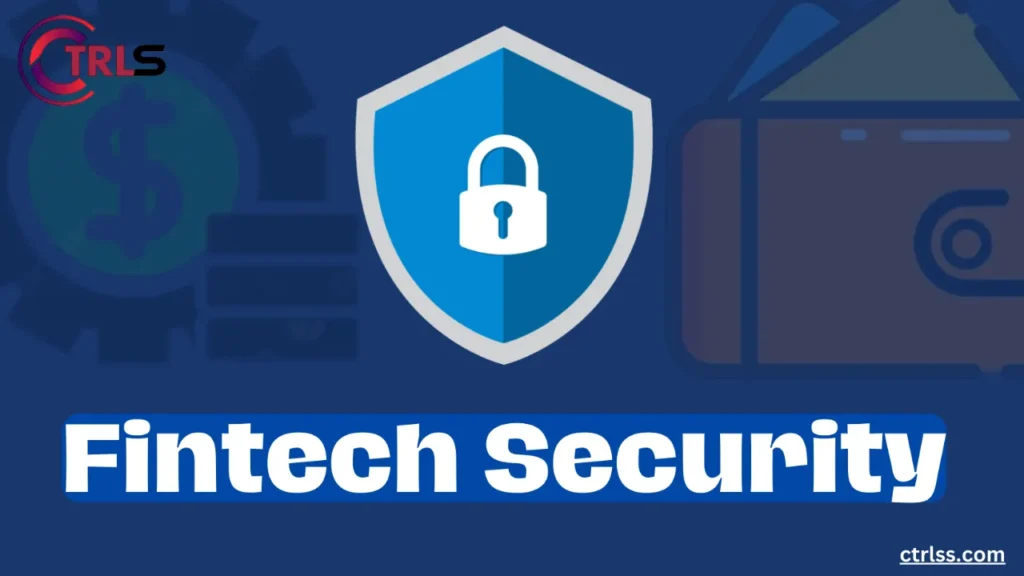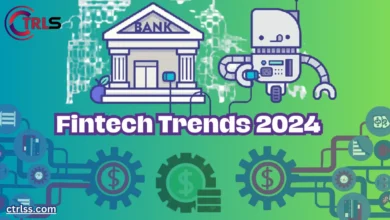Welcome to Fintech Security
In today’s rapidly evolving financial technology landscape, ensuring robust fintech security is more crucial than ever. With the rise of digital transactions and the increasing reliance on technology, protecting sensitive financial data has become a top priority for businesses and consumers alike. This article delves into essential tips and best practices to enhance your fintech security, safeguarding your operations against potential threats.

Understanding fintech security involves more than just implementing basic cybersecurity measures. It requires a comprehensive approach that includes advanced authentication methods, data encryption, and regular security assessments. By adopting these best practices, you can create a secure environment that not only protects your financial data but also builds trust with your customers.
The Importance Of Security In Fintech.
Security in fintech is paramount as it ensures the safety and integrity of financial transactions and sensitive data. The digital nature of fintech makes it vulnerable to various cyber threats, necessitating robust security measures…
- Protects Sensitive Data: Ensures personal and financial information is safe from unauthorized access.
- Builds Customer Trust: A secure platform fosters trust, encouraging more users to engage with fintech services.
- Compliance with Regulations: Adhering to security standards helps meet legal requirements, avoiding fines and penalties.
Strengthening fintech security is essential for maintaining customer confidence and staying ahead of evolving cyber threats. Continuous investment in security technologies and practices is crucial.
What Is Security In Technology?
Security in technology refers to the practices and measures taken to protect digital systems, networks, and data from unauthorized access, cyber threats, and damage. It encompasses a wide range of techniques and strategies…
- Cybersecurity: Protects internet-connected systems, including hardware, software, and data, from cyberattacks.
- Encryption: Ensures data is transformed into secure formats, preventing unauthorized access during transmission and storage.
- Access Control: Manages who can view or use resources in a computing environment, ensuring only authorized users have access.
Implementing robust security measures in technology is crucial for safeguarding sensitive information and maintaining the integrity of digital operations. Ongoing updates and vigilance are key to effective security.
What is Fintech Security?
Fintech security refers to the measures and practices implemented to protect financial technology systems from cyber threats. This includes safeguarding sensitive financial data, ensuring secure transactions, and preventing unauthorized access. The goal is to create a safe and trustworthy environment for digital financial services.
Key components of fintech security involve using advanced authentication methods, such as multi-factor authentication and biometric verification. Encryption technologies are also crucial, as they ensure that data transmitted over networks remains secure and inaccessible to malicious actors. Regular security audits and assessments help identify and mitigate potential vulnerabilities.
Maintaining fintech security requires a comprehensive and proactive approach. Companies must stay updated with the latest security trends and technologies to combat evolving threats. Employee training and awareness programs are essential to foster a culture of security within the organization, ensuring everyone plays a part in protecting financial data and systems.
What Does Fintech Mean?
Fintech, short for financial technology, refers to the innovative use of technology to deliver financial services and solutions. It encompasses a wide range of applications that aim to improve and automate financial processes…
- Digital Payments: Platforms like PayPal and Square enable secure, instant online transactions.
- Online Banking: Services that allow users to manage their bank accounts, loans, and investments digitally.
- Blockchain and Cryptocurrencies: Technologies that offer decentralized financial transactions and new forms of digital currency.
Fintech is revolutionizing the financial industry by making services more accessible, efficient, and user-friendly. Continuous innovation in this field is driving the future of how we manage and interact with money.
Why Is Cybersecurity In Fintech Important?
Cybersecurity in fintech is crucial because it protects sensitive financial data from cyber threats, ensuring the integrity and trustworthiness of digital financial transactions. Without robust cybersecurity measures, fintech services would be vulnerable to attacks…
- Protects Customer Data: Ensures that personal and financial information remains secure from hackers.
- Maintains Trust: A secure platform fosters confidence among users, essential for the adoption and growth of fintech services.
- Regulatory Compliance: Adheres to legal requirements, avoiding potential fines and enhancing credibility with stakeholders.
Investing in cybersecurity in fintech is essential to safeguard against evolving cyber threats, ensuring the safety of financial operations and the trust of customers. Continuous vigilance and updates are critical.
What Is Fintech Authentication?
Fintech authentication refers to the methods used to verify the identity of users accessing financial technology services. This is crucial to ensure that only authorized individuals can conduct transactions and access sensitive financial data. Common techniques include passwords, PINs, and security questions.
Advanced fintech authentication methods include multi-factor authentication (MFA), which combines two or more verification factors, such as something the user knows (password), something the user has (smartphone), and something the user is (biometrics). These methods significantly enhance security by making it harder for unauthorized users to gain access.
Biometric authentication, such as fingerprint scans, facial recognition, and voice recognition, is becoming increasingly popular in fintech. These methods provide a high level of security because biometric data is unique to each individual. As fintech continues to evolve, the adoption of innovative authentication technologies will be essential in maintaining secure and trustworthy financial services.
What Is The Main Goal Of Fintech?
| Goal | Description |
|---|---|
| Enhance Financial Accessibility | Fintech aims to make financial services more accessible to a broader audience, including those who are underserved by traditional banks. |
| Improve Efficiency | By leveraging technology, fintech solutions streamline financial processes, reducing the time and cost associated with transactions and services. |
| Increase Security | Fintech innovations focus on enhancing security through advanced authentication methods and encryption, ensuring safe and reliable financial transactions. |
| Offer Personalized Services | Fintech uses data analytics to provide personalized financial services and recommendations, catering to individual needs and preferences. |
What Is The difference Between Finance And Fintech?
Finance and fintech both deal with managing money but differ significantly in their approaches and tools. Finance relies on traditional methods and systems, while fintech integrates modern technology to enhance financial services…
- Traditional Finance: Involves conventional practices like banking, investment management, and financial planning, using established institutions and physical processes.
- Fintech Innovations: Utilizes technology such as mobile apps, blockchain, and AI to streamline financial operations, offering more accessible and efficient solutions.
- Service Delivery: Finance often requires face-to-face interactions and manual processes, whereas fintech provides digital solutions that enable remote and real-time transactions.
The primary difference lies in fintech’s use of technology to modernize and improve traditional financial practices, making services more efficient and user-friendly. Adapting to these innovations is key for staying competitive in the financial sector.
What Is The Biggest Challenge In Fintech?
The biggest challenge in fintech is navigating the complex landscape of regulatory compliance while maintaining innovation. As fintech evolves rapidly, staying compliant with diverse regulations is crucial…
- Regulatory Compliance: Adhering to varying regulations across regions can be complex and costly, impacting fintech operations and expansion.
- Data Security: Protecting sensitive financial data from cyber threats while ensuring compliance with data protection laws is a significant challenge.
- Customer Trust: Building and maintaining trust through transparent practices and robust security measures is essential for fintech success.
Balancing regulatory requirements with the need for innovation and security is a major challenge in fintech. Companies must continuously adapt to ensure compliance and build customer trust.
Tips To Ensure Financial Technology Security.
| Tip | Description |
|---|---|
| Implement Multi-Factor Authentication | Use multi-factor authentication (MFA) to add an extra layer of security, requiring users to provide multiple forms of verification before accessing accounts. |
| Regularly Update Software | Ensure all software and systems are up-to-date with the latest security patches to protect against vulnerabilities and cyber threats. |
| Encrypt Sensitive Data | Apply encryption methods to protect sensitive data both in transit and at rest, making it inaccessible to unauthorized individuals. |
| Conduct Regular Security Audits | Perform regular security audits to identify and address potential vulnerabilities, ensuring ongoing protection of financial systems. |
| Educate Employees | Provide ongoing training and awareness programs for employees about cybersecurity best practices and how to recognize phishing and other threats. |
The table outlines essential tips for ensuring financial technology security, including implementing multi-factor authentication, regularly updating software, and encrypting sensitive data. It also emphasizes the importance of conducting regular security audits and educating employees on cybersecurity best practices. These measures help protect financial systems from potential threats and vulnerabilities.
What Are The Risks Of FinTech Security?
The risks associated with fintech security can have profound implications for both users and financial institutions. As fintech platforms continue to grow, they encounter various security challenges that must be addressed…
- Data Breaches: Cybercriminals may exploit vulnerabilities to access and steal sensitive customer data, leading to financial losses and privacy violations.
- Fraud and Scams: Digital transactions are susceptible to fraud, including phishing attacks and fraudulent investment schemes that can deceive users and compromise accounts.
- System Vulnerabilities: Software bugs and weaknesses in fintech applications can be exploited by attackers to disrupt services or gain unauthorized access to financial resources.
Effective risk management in fintech involves implementing advanced security measures, continuous monitoring, and educating users about potential threats. Proactive strategies are vital for safeguarding digital financial ecosystems.
What Are The Best Practices To Ensure Fintech Security?
Ensuring fintech security requires adherence to best practices that protect digital financial systems from threats and vulnerabilities. Implementing these practices helps maintain the integrity and trustworthiness of fintech services…
- Utilize Multi-Factor Authentication (MFA): Strengthen access controls by requiring multiple forms of verification to enhance user identity protection.
- Encrypt Data: Apply encryption to safeguard sensitive financial information both in transit and at rest, preventing unauthorized access.
- Regular Security Audits: Conduct frequent security assessments to identify and address vulnerabilities, ensuring systems remain secure against emerging threats.
Adopting these best practices is crucial for maintaining robust fintech security. Continuous updates and vigilant monitoring are essential to protect against evolving cyber threats and ensure user confidence.
What Are The Key Aspects Of Cybersecurity In Fintech?
Key aspects of cybersecurity in fintech include robust data protection measures to ensure that sensitive financial information remains secure. This involves implementing strong encryption protocols and secure storage solutions to prevent unauthorized access and data breaches.
Another critical aspect is secure authentication processes. Fintech platforms must use multi-factor authentication and biometric verification to ensure that only authorized users can access their accounts. These methods enhance security by adding additional layers of verification.
Regular security assessments and audits are essential for maintaining cybersecurity in fintech. Continuous monitoring helps identify potential vulnerabilities and ensures that security measures are up-to-date with evolving threats. This proactive approach helps protect both users and financial institutions from cyber risks.
How Can You Ensure Cloud Security & Compliance In Fintech?
Ensuring cloud security and compliance in fintech involves implementing strategies that protect data and adhere to regulatory standards. This ensures that sensitive financial information is secure and compliant with industry regulations…
- Implement Strong Encryption: Encrypt data both at rest and in transit to protect it from unauthorized access and breaches.
- Adopt Multi-Factor Authentication (MFA): Use MFA to enhance access controls and ensure that only authorized users can access cloud resources.
- Conduct Regular Compliance Audits: Regularly review and audit cloud systems to ensure they meet regulatory requirements and address any potential security gaps.
Effective cloud security and compliance in fintech require a combination of encryption, access controls, and regular audits. Adopting these practices helps safeguard sensitive data and maintain regulatory adherence.
What Is The Future Of Fintech 2025?
The future of fintech in 2025 promises to be transformative, driven by advancements in technology and evolving consumer expectations. Innovations are set to reshape financial services and enhance user experiences…
- Increased Adoption of AI and Machine Learning: AI will play a pivotal role in personalizing financial services, improving fraud detection, and automating routine tasks.
- Expansion of Blockchain Technology: Blockchain will enhance transparency and security in transactions, offering more reliable and decentralized financial solutions.
- Growth of Digital Wallets and Cryptocurrencies: Digital wallets and cryptocurrencies will become more mainstream, facilitating faster and more convenient transactions across the globe.
The future of fintech by 2025 will be marked by advanced technologies and innovations that reshape the financial landscape. Staying ahead in these developments will be crucial for adapting to emerging trends and user needs.
How AI And Machine Learning Are Shaping Fintech Security?
AI and machine learning are revolutionizing fintech security by enhancing threat detection and response. Advanced algorithms analyze vast amounts of data in real time, identifying suspicious patterns and potential security breaches with greater accuracy than traditional methods.
Machine learning models continuously improve their accuracy by learning from new data and evolving threats. This adaptive capability helps fintech companies stay ahead of emerging cyber threats, ensuring that their security measures remain effective and up-to-date.
AI-powered systems also streamline the process of monitoring and managing security incidents. Automated responses and predictive analytics enable quicker identification and mitigation of threats, minimizing potential damage and reducing the burden on human security teams.
in conclusion
In conclusion, ensuring fintech security requires a multifaceted approach, including robust encryption, regular updates, and comprehensive audits. By implementing best practices like multi-factor authentication and continuous monitoring, fintech companies can protect sensitive data and maintain regulatory compliance. Staying vigilant against evolving threats and embracing advanced technologies will be crucial for safeguarding digital financial systems.



